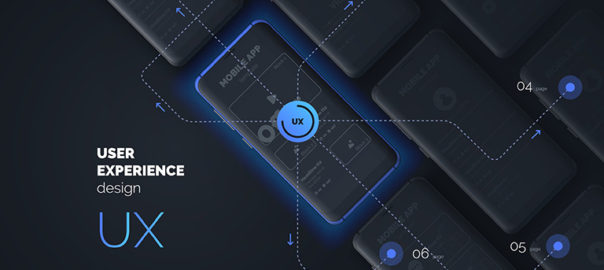There are two aspects to designing a website – a company’s marketing objective and users’ needs. One of the most challenging decisions a designer has to make is to strike a balance between the two. Boosting a company’s reach and profits is a common reason why brands use Dark UX Patterns.
What is Dark UX?
Dark UX Patterns are interfaces designed carefully to deliberately mislead users to choose a path they didn’t want to take. They are purposely designed to reach a company’s objectives without taking care of ethics and users’ needs. Dark UX came to light in 2010 after the boom of eCommerce industries on the web. To generate more sales, hit target numbers and get more subscriptions, etc., designers and business associates started creating misleading user interfaces to manipulate users.
Good user experience design is all about offering seamless and enjoyable interactions to users. User’s best interest should be of utmost priority, and there is no place for a deceptive or sneaky user experience design.
Here are some of the most commonly used Dark UX patterns that designers should not be ideally designing, and of which the users must be careful.
Get in-depth information about innovation in UX patterns here
Bait and Switch
Bait and switch is a sales (especially retail) tactic, which is no short than a blatant fraud. Baiting and switching usually consist of offering customers an enticing item at an attractive, affordable price. This lures users to perceive it as a good deal (that’s part one of the trick – the bait), but later turning the offer into a less desirable deal (that’s the second part of the trick – the switch). Although the deal is not as appealing as it was previously, the users are likely to take it to minimize their perceived loss.
Confirmshaming
Confirmshaming is the act of creating a feeling of guilt and regret, forcing the users into doing something, which they may not like to do in the first place. The option to decline is written in such a way as to shame the user into an agreement. The most common use is to get a user to sign up for a mailing list. It is also often found in exit-intent modals and other popups. Confirmshaming has made its way into retail, shaming users who don’t want to be bothered with a pop-up by assuming they’d rather pay full. Take a look at the following example:
Friend Spam
A lot of mobile apps seek various permissions when installed. One of the most commonly asked permission is to get access to your contacts on the pretext that they will use it for a desirable outcome (like finding friends to join you). However, in reality, it spams all your contacts in a message that claims to be from you.
Disguised Ads
As the name suggests, this pattern is adopted so that ads are disguised on the page, as if they were a part of the regular content or navigation. Considering the ads as regular content, users click them more often. Companies often run advertisements that look like a download button, tricking users into clicking on the ads rather than getting what they want.
Trick Questions
It’s a common situation in case of pop-ups with a confirmation. You read, and you don’t know whether to press OK or CANCEL. You respond to a question, which, when glanced upon quickly appears to ask one thing, but if read carefully, ask another matter entirely. They are cheap tricks that take advantage of the fact that people browse through web and app pages, instead of reading the content carefully. Users want to complete their tasks as quickly as possible, and that’s where they fall to these tricky questions.
Hidden Costs
You get to the last step of the checkout process, only to discover some unexpected charges have appeared, e.g. delivery charges, tax, etc. That’s not a new situation. A lot of E-retailers are trying to be transparent about it. However, you can still site examples of E-retailers, now and then, who use it to boost their profits. The designers should stay away from such practices. We checked out GoDaddy, a leading domain and web service provider, and found out an example of hidden costs.
Forced Continuity
Read the small print; many free trials end with continuing charges. When your free trial with a service comes to an end, your credit card silently starts getting charged without any warning. You are then not given an easy way to cancel the automatic renewal. To avoid this dark pattern, don’t provide payment for anything that’s free.
Misdirection
Misdirection occurs when the user’s attention is guided to a specific place. This is done so that they won’t notice something else that is happening. This dark pattern design forces you to focus on one thing just to distract you from another. Your reflex actions could send you far, far away from what you had in mind. So, take a good look and read the message before you click
Roach Motel
This type of dark pattern is pretty standard and reasonably relatable by all. The design makes it very easy for the user to get into a specific situation but then makes it hard for them to get out of. Once you have signed up, you are suddenly not given an easy way to cancel the automatic renewal, unsubscribe or opt-out of a service.
You may be interested in a few golden rules for UX designs
The designers’ community must take the same guard altogether and should advocate honest designs. There shouldn’t be any frauds, misleading communication or any form of trickery. Want to hear more about Dark UX patterns? Have a quick chat with our designers.





